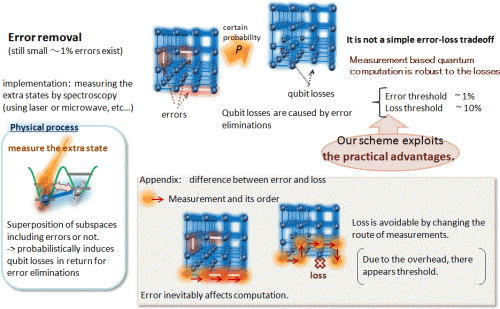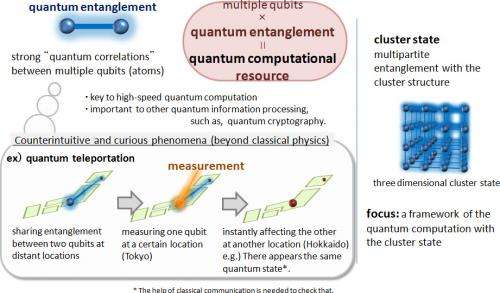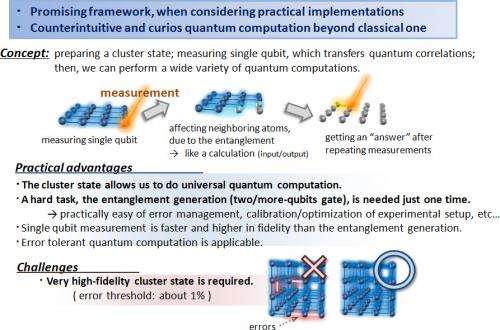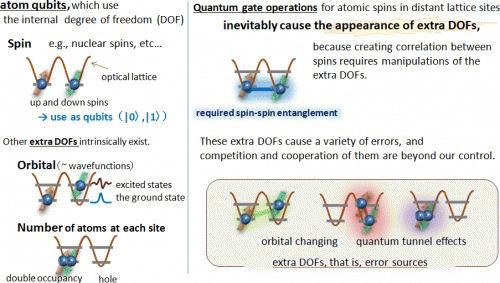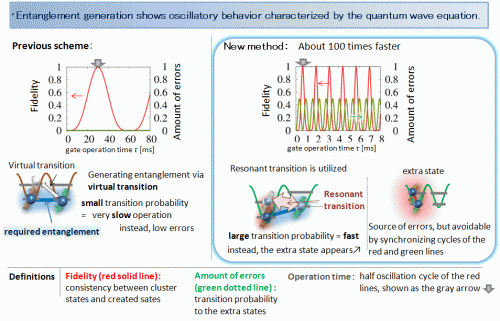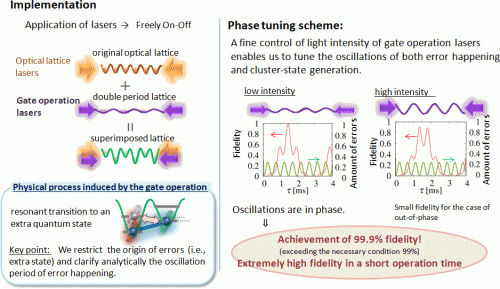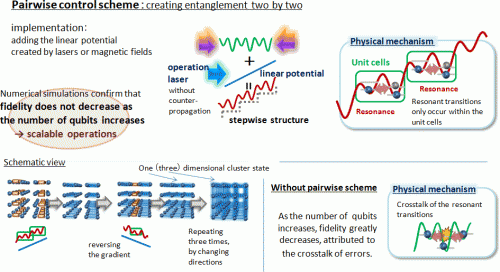Entangling the atoms in an optical lattice for quantum computation
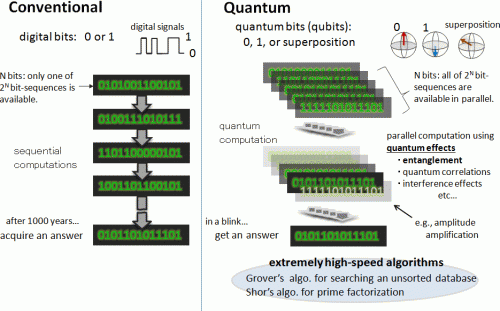
Nippon Telegraph and Telephone has proposed a method for generating a large-scale entangled quantum state of ultracold atoms in an optical lattice with high fidelity and short operation time, which becomes a resource for quantum computers. This result solves important problems toward the realization of a quantum computer, such as scalability of quantum bits and error reduction. This result paves the way for realizing a million-bit-scale quantum computing.
The research will be published online in Physical Review Letters on March 17, 2014, and was supported in part by Japan Science and Technology Agency, CREST.
The biggest challenges for realizing a quantum computer (Fig. 1 ) are obtaining a scalability of quantum bits and decreasing the errors. An optical lattice is a good candidate for solving these problems. In an optical lattice (Fig. 2 ), a single atom can be periodically confined in each site of the lattice with a distance of about light wavelength (< 1 μm). Compared to other physical systems, an optical lattice promises to store many atoms in a very small volume and in a highly ordered manner, where atoms can serve as uniform and ideal quantum bits. An optical lattice clock (Fig. 3 ) is a promising application of this technology and has already been experimentally demonstrated. A special large-scale entangled quantum state (Fig. 4 ) among huge number of atoms can realize measurement-based quantum computation through individual atom measurements, which are more simple operations compared to quantum gates (Fig. 5 ). An optical lattice can compactly array many atoms, but no method has been established that can generate a large-scale entangled quantum state with high fidelity and short operation time, which are necessary for the realization of a quantum computer.
NTT basic research laboratories and NTT secure platform laboratories have collaborated to exploit their advanced techniques on ultracold atoms and quantum information processing toward this achievement. For the first time, they successfully proposed a method for generating a large-scale entangled quantum state of atoms confined in optical lattice with high fidelity (>99%) and short operation time (~1ms), which can be used as a computational resource for quantum computing. The existing methods have tradeoffs, such that high-fidelity gate operations work slowly or fast gate operations offer low fidelity. Moreover, existing multi-bit operation creates crosstalk and causes serious error. In this research, NTT proposes a new entanglement generation method with high fidelity, short operation time and scalability, which solves the above tradeoffs by ingeniously controlling several laser lights for designing the optical lattice. This result opens up the possibility of realizing a quantum computer with a million scale quantum bits.
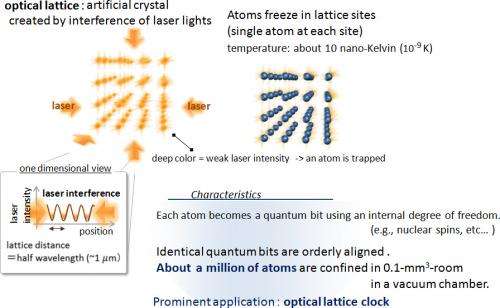
(1) Atoms in an optical lattice for quantum bits
An optical lattice is an artificial crystal made by lasers and an ideal crystal without defects and impurities. This crystal has a periodic structure with a distance of about light wavelength (< 1 μm) and can stably confine an atom in each lattice site. Existing technology can confine about a million atoms within a 3-dimensional space with 100 μm on a side. This huge number of atoms can be treated as homogeneous and ideal quantum bits.
(2)Entanglement generation method with high fidelity, short operation time, and scalability
In order to decrease the errors of quantum bits, they should not interact with each other. However, entangled quantum bits interact with each other and this produces unwanted errors (Fig. 6 ). In this research, NTT proposes a method to utilize only one physical state for mediating quantum bits and actively use it as an ancillary state, resulting in high-fidelity quantum entangling gates (Fig. 7 ). The researchers propose a "phase-tuning method" (Fig. 8 ) for solving the tradeoff between fidelity and operation time, a "pair-wise control method" (Fig. 9 ) for generating entanglement in parallel without producing a crosstalk, and an "error removal method" (Fig. 10 ) for obtaining a better error-tolerance by converting errors to losses. The great advantage is that this method can be simply implemented by combining the currently established technologies such as controlling the wavelength and strength of laser (microwave) lights. The present limit of the scale (about a million atoms) only depends on the atom trap technology. If a much greater number of atoms can be trapped in future, this method can be applied in the same way.
(3) Performance verification by exact numerical simulations
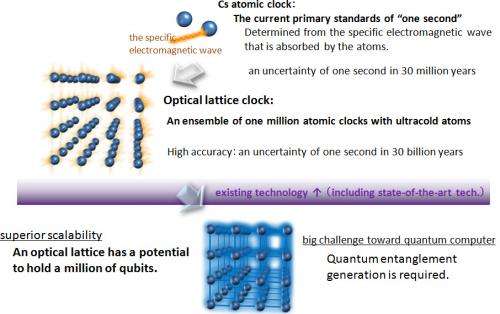
The researchers verified the performance of this method by ab-initio physical modeling and exact numerical simulations. Ultracold atoms in an optical lattice are considered to be a clean and ideal physical system, which makes theoretical evaluation highly realistic. Therefore, this method will be faithfully realized in an experiment.
The researchers plan to study the detailed conditions for experimentally demonstrating the generation of large-scale entangled quantum states based on the present method. In parallel, they plan to develop an essential experimental technique for measuring the quantum state of individual atoms. Moreover, they will attempt to generate the entangled quantum state in a two-dimensional optical lattice, where the individual atom measurement is easier to perform in contrast to the three dimensional case, and try to demonstrate the measurement-based quantum computation in a scale of 10,000 quantum bits within five years. The goal is to realize a large-scale quantum computation using one million quantum bits in a three-dimensional optical lattice.
Journal information: Physical Review Letters
Provided by Nippon Telegraph and Telephone
